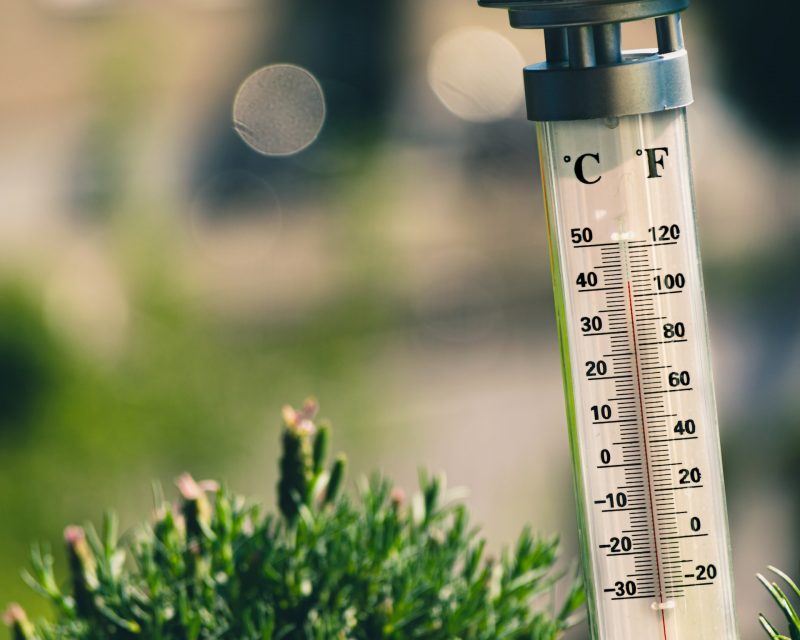As our planet undergoes rapid climate changes, new terms and measurements are emerging to help us grasp the complex interplay between weather, temperature, and humidity. One such critical concept is the “wet bulb temperature.” While air temperature alone often dictates our understanding of hot days, the wet bulb temperature offers a more comprehensive view, considering the moisture content in the air. In this article, we’ll unravel the significance of wet bulb temperature and its importance in addressing climate challenges.
What is Wet Bulb Temperature?
Imagine a sweltering day when the sun’s rays are intense, and you’re struggling to keep cool. Commonly, we gauge temperature by checking the air temperature, but this approach only paints part of the picture. Enter the wet bulb temperature – a measurement that goes beyond just the air temperature and takes into account the humidity in the air.
Wet bulb temperature is determined by wrapping a thermometer with a wet cloth. As the water from the cloth evaporates, it cools the thermometer, much like our body cools down through sweating. The wet bulb temperature represents the lowest temperature that can be reached through this evaporation process. Importantly, this measurement provides insights into how effectively the air can cool down and impacts various aspects of our lives.
The Health and Safety Connection
In regions characterized by high humidity levels, such as coastal areas and tropical climates, the significance of understanding wet bulb temperature cannot be overstated – it holds the key to public health and safety. Imagine a place where the air is thick with moisture, and every breath feels like wading through a damp blanket. In such environments, the human body’s natural cooling mechanism through sweating becomes compromised due to the limited evaporation rate. This is where the wet bulb temperature steps in as a sentinel of potential danger.
As humidity rises, so does the wet bulb temperature, creating a perilous synergy when combined with high air temperatures. This combination can lead to a host of heat-related illnesses, ranging from heat stress and exhaustion to the life-threatening condition of heatstroke. When the body’s cooling efficiency is hampered by both elevated temperatures and moisture-laden air, it struggles to dissipate excess heat. The body becomes an overheating furnace, and the consequences can be dire.
Climate Change and Wet Bulb Temperatures
The looming specter of climate change magnifies the relevance of wet bulb temperature. With global temperatures on the rise due to greenhouse gas emissions, wet bulb temperatures are following suit. This means that regions already grappling with hot climates and high humidity will face even more challenging conditions. Vulnerable populations, including the elderly, children, and those without access to air conditioning, are at a heightened risk of health hazards.
Imagine communities where cooling resources are scarce, where the rhythm of life becomes a delicate dance to avoid overheating. As wet bulb temperatures increase, the boundaries of habitability shift, posing an urgent threat to livelihoods and wellbeing. It’s not just about uncomfortably hot days; it’s about the potential for extended periods of unbearable heat, placing lives in jeopardy and straining the capacities of medical services.
Implications for Agriculture and Ecosystems
The ramifications of high wet bulb temperatures ripple through ecosystems and agricultural landscapes as well. In the realm of agriculture, crops and livestock face unprecedented challenges. Just as our bodies struggle to cool down, so do plants and animals. Crops subjected to extreme heat stress can wither and yield reduced harvests, leading to economic losses and food scarcity. Livestock can become vulnerable to heat-related illnesses, affecting meat and dairy production.
Ecosystems, which thrive on delicate balances, are equally susceptible. High wet bulb temperatures can lead to habitat degradation, disrupt biodiversity, and even trigger migration patterns of wildlife seeking cooler climes. The fragility of natural ecosystems becomes all too apparent when faced with the unrelenting pressures of elevated temperatures and humidity.
Policy and Preparedness
The implications of wet bulb temperatures extend far beyond scientific understanding; they inform policy decisions and strategies for a more resilient future. Urban planners, policymakers, and emergency response teams must heed the warning signs embedded in wet bulb data. By incorporating this knowledge into their frameworks, cities can develop effective heat mitigation strategies, design cooling infrastructure, and implement timely emergency protocols.
Imagine cities that are well-prepared for the onslaught of heatwaves – where public spaces are designed to offer shade and relief, where vulnerable populations have access to cooling centres, and where community resilience is paramount. The integration of wet bulb temperature information empowers decision-makers to allocate resources where they are most needed, safeguarding lives and fostering adaptable urban environments.
Conclusion
In a world grappling with the ramifications of climate change, the wet bulb temperature emerges as a vital indicator of our changing environment. Its significance extends beyond mere numbers; it shapes policies, health outcomes, agricultural practices, and our overall preparedness for a warmer future. By embracing this comprehensive measurement, we take a significant step towards safeguarding our communities, ecosystems, and the planet as a whole. As we continue to navigate the challenges of a changing climate, understanding the wet bulb temperature becomes paramount for building a resilient and sustainable world.

